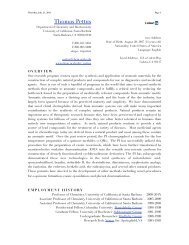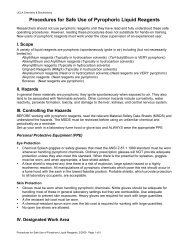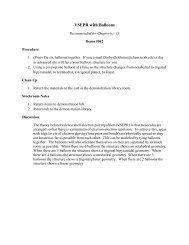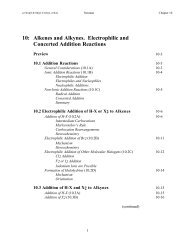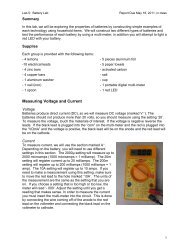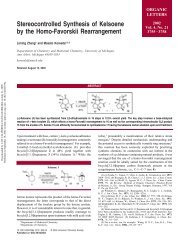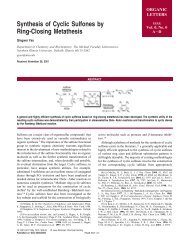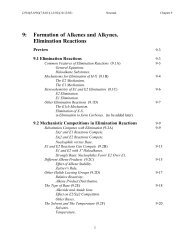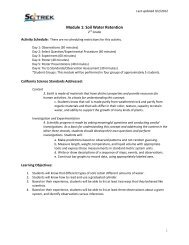14: Substituent Effects
14: Substituent Effects
14: Substituent Effects
You also want an ePaper? Increase the reach of your titles
YUMPU automatically turns print PDFs into web optimized ePapers that Google loves.
(9/94)(11,12/96)(11,12/04,01/05) Neuman Chapter <strong>14</strong><br />
The <strong>Substituent</strong>s F and CH3O. While F in a meta position lowers the solvolysis rate<br />
(kS-meta/kH = 0.03), it causes a small rate increase in the para position (kS-para/kH = 2).<br />
Similarly, CH3O slightly lowers the solvolysis rate when it is meta (kS-meta/kH = 0.6), but<br />
dramatically raises it when it is para (kS-para/kH = 3,400). Both of these substituents act as<br />
electron withdrawing groups (EWG's) when they are in the meta position, however they act<br />
like electron donating substituents (EDG's) when they are in the para position!<br />
These different effects in m and p positions for F and CH3O are not due to any change in<br />
their inductive effects when they are moved from m to p positions. Both F and CH3O are<br />
inductively electron withdrawing (-I) whether in the meta or para position. Rather, this<br />
positional variation in their effect on the reaction rate is because they interact with the<br />
carbocationic center not just inductively, but also by resonance when substituted in the para<br />
position. We will see below that the resonance effects of these two substituents are opposite<br />
to their inductive effects.<br />
The Origin of the Resonance Effect. We illustrate the resonance behavior of p-CH3O<br />
groups in Figure <strong>14</strong>.22.<br />
Figure <strong>14</strong>.22<br />
You can see that the (+) charge is fully delocalized into the aromatic ring when CH3O is either<br />
meta or para. However, when CH3O is para, one of the unshared electron pairs on O can<br />
interact with the positive charge giving the extra resonance structure that we see in Figure<br />
<strong>14</strong>.22. This is not possible with m-CH3O.<br />
While the CH3O substituent is inductively electron withdrawing because O is more<br />
electronegative than C, it is resonance electron donating when given the opportunity. The<br />
same is true for F as we show in Figure <strong>14</strong>.23 [next page].<br />
16





